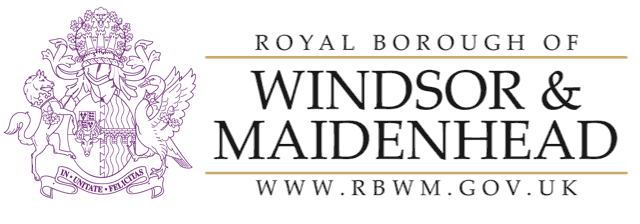Introduction
Paragraph 9 of Schedule 7A of the Town and Country Planning Act 1990 requires that where an applicant relies upon a significant increase in onsite habitat biodiversity value, the “significant habitat enhancement” must be subject to a planning condition, section 106 agreement, or conservation covenant, and that habitat enhancement to be maintained for at least 30 years on completion of the development.
The following guidance note is designed to provide guidance of what is defined as ‘significant onsite enhancements’. It also provides guidance on when significant onsite enhancements will be adequately secured via a condition and when a s106 agreement or conservation covenant will be required.
Criteria used to define significant onsite enhancements
The following criteria state what RBWM consider significant onsite enhancements for Biodiversity Net Gain, therefore land managers would be expected to maintain these habitats and submit monitoring reports at the stated intervals in the planning condition or s106, for 30 years from the development’s completion.
Criteria 1:
Onsite creation, improvements in condition, or retention, of habitats assigned medium distinctiveness or higher in the Statutory Biodiversity Metric, will be considered as significant.
Rationale: Medium or higher distinctiveness habitats, by their nature as higher value, are likely to contribute a larger number of biodiversity units towards the delivery of 10% net gain. Therefore, it is key that their creation, enhancement, and retention is fully secured to ensure the biodiversity net gain objective is met. In light of this, their management must also be secured as part of a 30 year Habitat Management and Monitoring Plan, so the units delivered are maintained.
Criteria 2:
The onsite creation or improvement in condition of low distinctiveness habitats (excluding units delivered by vegetated gardens), will be considered significant, where either:
A. the combined number of units delivered is equal to or greater than 0.5; and/or
B. the combined number of low distinctiveness units is equivalent to 10% or more of the baseline biodiversity unit value of the site,
Rationale: The goal of Biodiversity Net Gain is to deliver measurable gains in biodiversity as a result of development. Low distinctiveness habitats can represent a large part of a development’s Biodiversity Net Gain Plan.
If creation or enhancement of low distinctiveness habitats account for 10% or more of the baseline value of the site, then they are considered to be a significant proportion of the Biodiversity Net Gain Plan. Without the delivery of these units, the development would not secure a measurable net gain. In addition, large areas of low distinctiveness habitats can also be considered as significant, simply due to their scale.
For example, 0.5 units of good condition modified grassland covers just over 1000m. This is considered a significant area of habitat so would also need to be secured as part of a 30-year Habitat Management and Monitoring Plan to ensure that the biodiversity net gain objective is achieved.
How will significant onsite enhancements be secured?
On sites where medium, high, or very high distinctiveness habitats are involved, 30-year maintenance and monitoring will usually be secured using a Section 106 Agreement.
Exceptions may be made to this in some circumstances. For example, a condition may be appropriate if the only medium distinctiveness habitat being delivered is urban trees.
In cases where onsite enhancements involve only low distinctiveness habitats, then, for habitats listed in Table one, if the target condition is moderate or good, or over 100m for linear habitats, a s106 will usually be used to secure the 30-year management and monitoring. In all other instances a condition will normally be the chosen mechanism.
Table one
| Habitat | Sub-habitat |
|---|---|
| Grassland | Modified grassland |
| Lakes | Ornamental lake or pond |
| Urban | Bioswale |
| Urban | Façade bound green wall |
| Urban | Ground based green wall |
| Urban | Intensive green roof |
| Urban | Rain garden |
| Urban | Sustainable drainage system |
| Woodland and Forest | Other coniferous woodland |
| Hedgerows and Lines of trees | Native hedgerow |
| Hedgerows and Lines of trees | Line of Trees |
| Hedgerows and Lines of trees | Line of trees - associated with bank or ditch |
Rationale: Where a target condition of moderate or good is proposed, habitat management will normally be required in order to achieve the proposed condition. Advice from the LPA on changes to the management regime may be required and ecological expertise needed to assess monitoring reports.
In contrast, when poor condition is the target for a low distinctiveness habitat, monitoring will not require consideration of condition assessment criteria and changes to ecological management plans. As such monitoring intervals may be less frequent and reviewing monitoring work will not require staff with ecological expertise.
Monitoring Requirements within a Habitat Management and Monitoring Plan
Habitat Management and Monitoring Plans should be proportionate to complexity of the habitats being created. The scope of monitoring needed will vary on a case-by-case basis depending on what is being proposed.
Where significant onsite enhancements are secured via a condition, monitoring is likely to be less frequent and focus on demonstrating at the start of the 30-year period that all the proposed habitats on the site have been created as was planned. Subsequent monitoring reports would mainly need to show that the habitats were all still present.
Monitoring Costs
Monitoring costs to cover the Local Planning Authorities time taken to oversee monitoring of significant on-site enhancements secured via s106 agreements will be published in due course.
